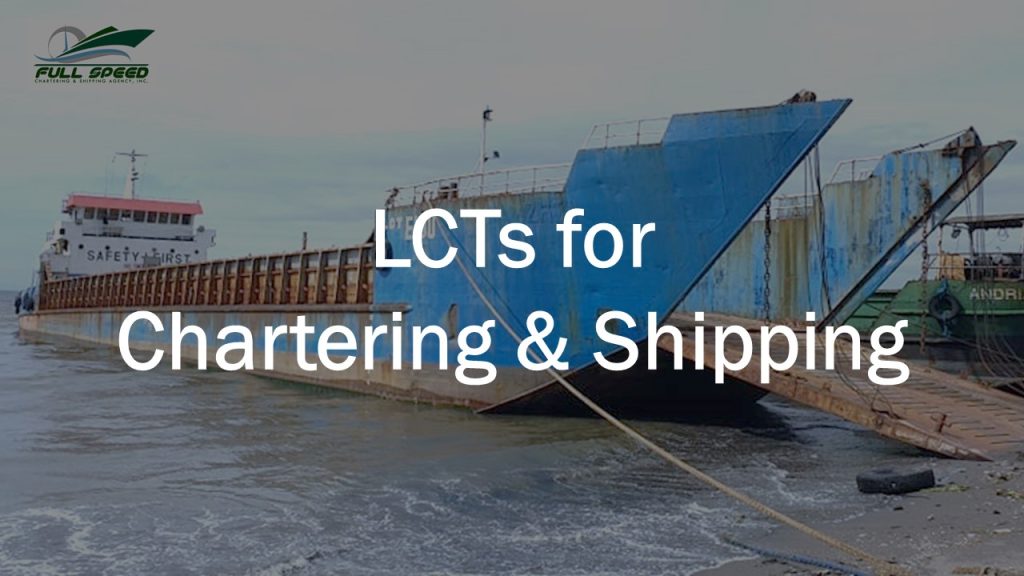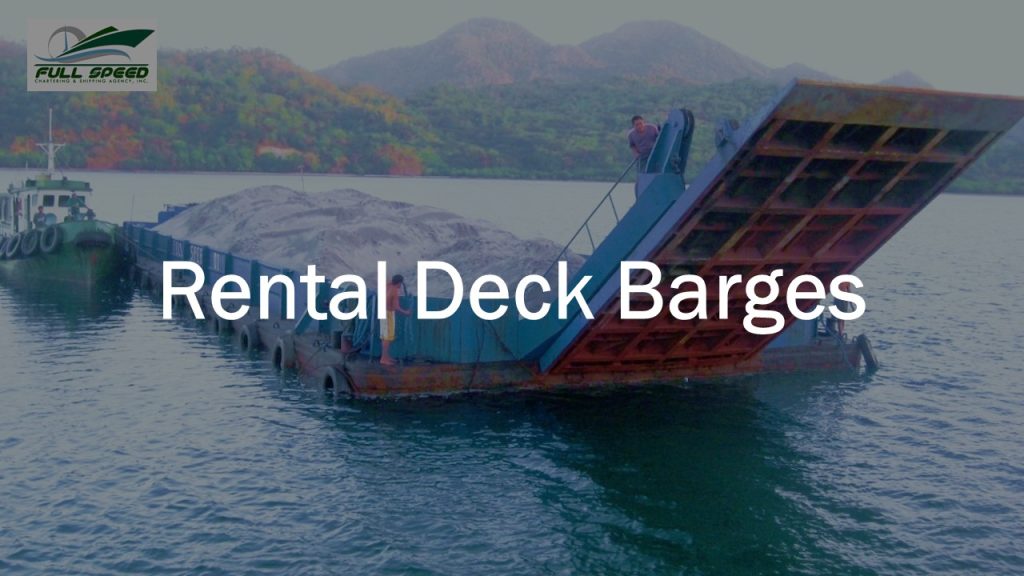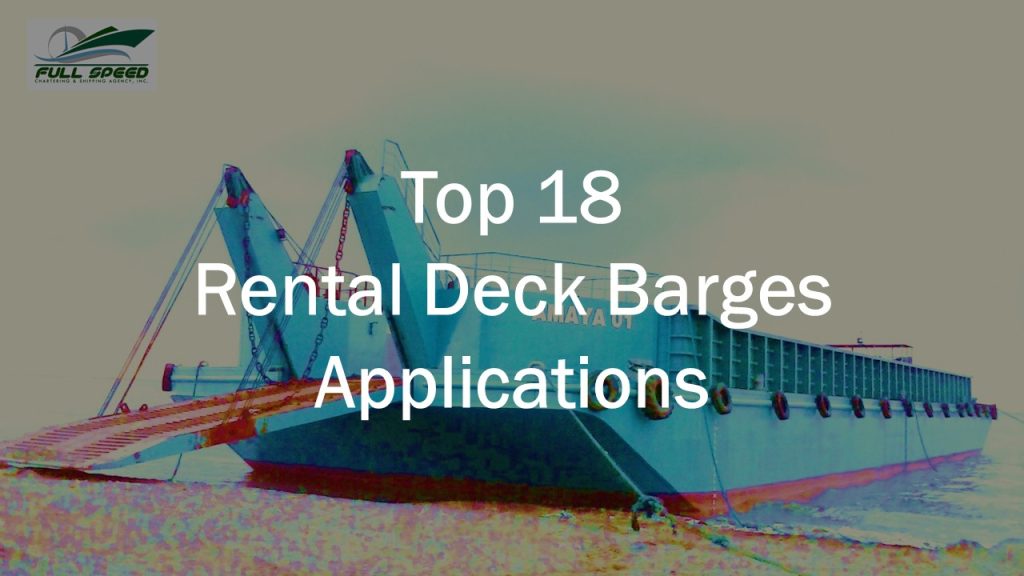Imagine constructing massive, awe-inspiring bridges without the buzzing confusion of trucks and cranes on site. Picture a serene setting where the heavy lifting happens silently on water, away from terrestrial chaos. Welcome to the world of using barges for bridge construction—an innovative approach that is revolutionizing how we build bridges. This ingenious method not only offers a unique solution to logistical challenges but also provides significant environmental and economic benefits. In this article, we will transport you down rivers and across seas to unravel 5 key advantages of employing barges for bridge construction projects in the Philippines.
Click here to view our LCT barges for bridge construction.
Click here to view our tug and barge for bridge construction.
Understanding the Role of Barges for Bridge Construction in the Philippines
Navigating the nuances of bridge construction within the archipelago nation of the Philippines presents its own unique set of challenges. Enter barges; these floating steel behemoths play a crucial role in making such infrastructure projects a reality. Given that the country consists of over 7,600 islands, bridges are often indispensable lifelines connecting communities; construction without compromising marine life and surrounding ecosystems becomes utterly important.
Barges offer numerous operational advantages, all while promoting environmental sustainability. Utilizing their vast load capacity potential means fewer trips hauling materials back and forth across water bodies. This efficiency reduces not only costs but also minimizes disruption to aquatic habitats—a balancing act between development needs and environmental conservation. So next time you happen to cross a bridge in this tropical paradise, spare a thought for the silent floaters—barges—that played an essential part in structuring that wondrous feat of engineering.
Do You Want to Hire Barges for Bridge Construction Projects in the Philippines?
Indeed, as the demand for robust infrastructure grows in the Philippines, sophisticated bridge construction projects are sprouting across the nation. A large number of these projects require barges to transport goods and machinery over bodies of water. However, sourcing such services could be an uphill task without a reliable partner by your side. That’s where Full Speed Chartering and Shipping Agency Inc., fondly known as FSCSAI, steps in!
- Email us: info@fullspeedchartering.com
- Mobile, Viber, WhatsApp: +63 939 3753224
- Facebook Messenger: Click here
- Click here to inquire
With dedicated expertise in chartering and shipping services at competitive prices, FSCSAI ensures you get value for your money. The company offers high-capacity barges adapted to carry heavy construction equipment and other materials essential for bridge construction efficiently across Philippine waters. So why take on the stress of logistics yourself when you can enlist FSCSAI, a leader aware of your dynamic needs? With their service, not only do you secure lower-cost material transportation but also guarantee timely project completion!
FSCSAI has a proven track record of providing efficient and reliable services to numerous clients, making them one of the most reputed shipping agencies in the Philippines. They have an extensive fleet that can cater to various types of cargo, including construction materials, heavy equipment, and even hazardous substances. The agency takes pride in its well-trained Filipino staff, who are equipped with the technical knowledge necessary for safe and smooth transport operations.
Moreover, FSCSAI understands how vital punctuality is when it comes to project deadlines. Hence, they ensure their delivery schedules are strictly adhered to to avoid any possible delays that might jeopardize your project timeline. Their sophisticated tracking system enables you to monitor your shipments in real-time, giving you peace of mind knowing your goods are on schedule.
They also prioritize safety above everything else; their crew is regularly trained on safety measures and protocols, which have resulted in a remarkable record free from major incidents or accidents. Alongside this commitment to safety, FSCSAI also recognizes its responsibility towards the environment.
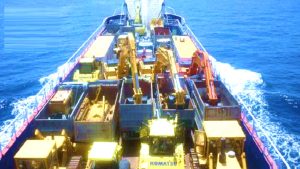
What are the 5 Advantages of Using Barges for Bridge Construction in the Philippines?
As a nation spread across 7,000+ islands, the Philippines demands robust and cost-effective solutions for building and maintaining bridges. Enter barge-based bridge construction. While this method of construction might sound unusual at first glance, it offers unique advantages that are perfectly attuned to the geographical realities of the Philippine archipelago.
The use of barges for bridge construction circumvents traditional challenges such as difficult terrain and expensive land acquisition processes. As movable bases on water bodies, they provide a remotely operated solution that reaches even the most inaccessible corners of the country. So, what truly sets barge-based bridge construction apart? Let’s delve into its five compelling benefits that are genuinely game-changing for infrastructural development in the Philippines.
Here are the 5 benefits of utilizing barges for bridge construction in the Philippines:
Advantage #1 of Using Barges for Bridge Construction: Cost-Effective Transportation Solution
Barge transportation really shines when it comes to being cost-effective, especially with mega projects like bridge construction. In the Philippines, where archipelagic conditions are the norm, bridge building can be both geographically challenging and astronomically expensive. Land-based methods require multiple heavy equipment units with high fuel consumption, leading to higher project expenditures—an aspect that can be significantly reduced by utilizing barges.
On the waterways, barges for bridge construction have an inherent advantage: they move large volumes of heavy materials at a much lower cost per tonne-mile than other modes of transport. This cost-efficiency is not just about low fuel consumption but also extends to loading and offloading; these floating behemoths can be used as temporary working platforms, helping to reduce operational timescales, too. As such, opting for barge haulage rather than over-the-road trucking in bridge construction could save millions of pesos while ensuring reliable and efficient delivery schedules.
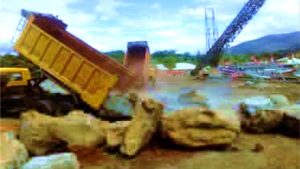
Advantage #2 of Using Barges for Bridge Construction: Environmentally Friendly Option
Another exquisite advantage of utilizing barges in bridge construction is their environmentally friendly nature. Barges have a lower carbon footprint compared to other modes of transport employed in the construction process. They consume less fuel per ton, significantly reducing greenhouse gas emissions—a pivotal advantage given the increasing threat of climate change globally.
Moreover, since barges are mostly used on waterways and rivers, they ease traffic congestion on roads that would otherwise be encumbered by heavy trucks carrying bridge components. This not only mitigates air and noise pollution but also reduces wear and tear on infrastructure. In an era where sustainable practices are fast becoming non-negotiable, opting for barge use in bridge construction serves as a beacon of responsible stewardship over our precious ecosystem.
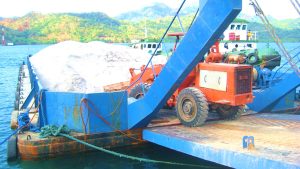
Advantage #3 of Using Barges for Bridge Construction: Versatility and Flexibility
Advantage number 3 of using barges for bridge construction transcends mere utility. It’s all about versatility and flexibility. These aquatic vehicles can operate in numerous different situations, not simply limiting themselves to construction projects that are close to provinces or islands. They lend a helping hand regardless of the logistical complexities involved, whether it’s mountains, plains, or valleys surrounded by water bodies.
Barges have this uncanny ability to seamlessly adapt according to varying job necessities and environmental conditions, making them incredibly practical for every type of construction project you could think of. Their customization potential is another benefit that cannot be ignored. When loaded with cranes or other heavy machinery, they become powerful floating platforms, executing tasks that would otherwise be unfeasible. This flexible approach provided by barges ensures that no bridge construction project in the Philippines remains beyond the realm of possibility due to inaccessible terrain or challenging geographical issues.

Advantage #4 of Using Barges for Bridge Construction: High Load Capacity of Barges
Harnessing the immense load-bearing strength of barges could be a game-changer in bridge construction. Imagine being able to hold hundreds or even thousands of tonnes, negating the necessity for multiple trips to transport construction materials and heavy equipment. The barge’s robust high-load capacity enables it to shoulder these colossal weights without faltering, minimizing logistical headaches and streamlining operations.
These floating beasts drastically reduce the time and cost spent on transportation logistics, significantly boosting efficiency rates in the process. Unlike trucks that have to navigate through congested city roads or treacherous terrain before reaching their destination, barges can smoothly glide through bodies of water, carrying astronomical loads with ease. In essence, using barges for bridge construction is like having Hercules at your service—proudly bearing burdens so you can focus on building better bridges faster.
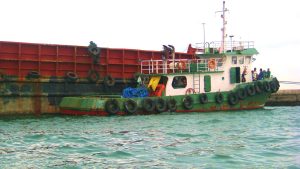
Advantage #5 of Using Barges for Bridge Construction: Enhancing Accessibility in Construction Sites
Advantage 5 dips into one of the most compelling incentives for using barges in bridge construction: enhanced accessibility. In many parts of the Philippines, certain locations pose quite a challenge to constructors, either due to geographical ruggedness or closely packed urban settlements. With traditional construction approaches, these obstacles could amount to significant delays and cost overruns.
However, when using barges for bridge construction, such limitations can be seamlessly navigated. Barges can effortlessly access remote river deltas or waterfront cities with cramped space available on land. By combating geographical hurdles and enhancing site accessibility, barges significantly streamline operations and bring projects closer to their successful realization. The integration of this water-based transport method uproots conventional hindrances and steers projects towards efficient completion amid challenging terrains.
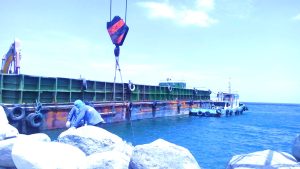
How Do You Rent Barges for Bridge Construction Projects in the Philippines?
Renting barges for bridge construction projects in the Philippines is not as complex as it may initially appear. The first step involves conducting a comprehensive market analysis to identify the most suitable barge rental companies in line with your specific project requirements and budget specifications. It’s essential to focus on companies that can provide deep water, shallow draft, deck, and spud barges that fit the range of work you plan to execute.
Before finalizing the agreement, it’s crucial to inquire about any hidden charges and understand their policies regarding damage or delays caused by bad weather or unforeseen circumstances. Also, look out for professional advice from these companies based on local conditions and the inherent challenges in Philippine waters. Finally, yet importantly, opt for a company that provides experienced crew members along with strong technical support, which will be pivotal in ensuring seamless operations from inception through completion.
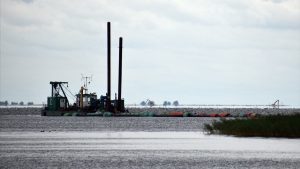
How Do Barges Help Bridge Construction?
Barges for bridge construction are often considered the silent heroes of Filipino civil engineers. Barges for bridge construction projects play a crucial role in streamlining operations. In regions like the Philippines, where numerous islands dot the landscape, creating an infrastructure that links these islands becomes challenging. Barges step in to tackle this challenge head-on by providing a means for transporting heavy equipment and material across waters swiftly and effectively.
Sailing past the connectivity hurdles presented by conventional means of transportation, barges ensure that every piece of machinery and raw material needed for constructing robust bridges reaches its destination on time—no delays due to traffic congestion or terrain difficulty here! But efficiency isn’t all there is; barges also showcase versatility! They double up as floating cranes, enabling engineers to perform tasks such as pile driving in deep water or lifting heavy steel beams directly onto bridge pillars. Hence, with their adaptability and fleet-footed nature helping sidestep logistical nightmares, barges are indeed indispensable allies in bridgeworks across the Philippine archipelago.

The Practical Applications of Barges for Bridge Construction in the Philippines
Barges play a vital role in bridge construction projects strewn across the Philippines, not just as simple transporters of heavy materials but as floating workstations. They serve as platforms upon which cranes assemble gargantuan segments of bridges. Barges for bridge construction projects, with their robust build and capacity to carry tons of weight, enable seamless transportation and assembly of these giant structures amidst the country’s myriad waterways.
The nation’s topography, which includes over 7,000 islands, correlates to complex and extensive water systems that necessitate countless bridges for transport connectivity. Here is where barges become crucial; they navigate through narrow channels inaccessible by road-bound heavy machines while carrying huge pillars or trusses for our future bridges. Beyond structural utility, barges also facilitate eco-sensitive construction practices by reducing the need for intrusive land-based equipment within delicate ecosystems along riverbanks and coastal areas—indeed, an unsurpassed blend of practicality and ecological responsibility!
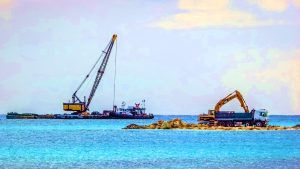
What are the Famous Water Bridges in the Philippines?
Tucked amid the stunning archipelago of the Philippines lies an extraordinary testament to human ingenuity and engineering: water bridges. These structures are not only functional but also serve as touristic spectacles, tattooing a stunning visual signature into the breathtaking local landscapes.
One such attraction is the Buntun Bridge straddling the Cagayan River, Island of Luzon—a fascinating sight with surrounding panoramas in addition to its unique blend of design and durability. Filipino civil engineers utilized barges for bridge construction.
Another prominent example is the Marcelo Fernan Bridge in Metro Cebu, a timeless icon from which enchanting views of the Mactan Channel can be absorbed. With its aesthetic cable-stayed design, it provides a mesmerizing marvel for locals and tourists alike. These Filipino engineers also used barges for bridge construction.
Filipino contractors used barges for the construction of the San Juanico bridge, which spans the San Juanico Strait and connects the islands of Samar and Leyte. It’s hailed as the longest bridge in the Philippines, offering picturesque sights of islets, whirlpools, and vast seas. Its architectural masterpiece makes it a remarkable symbol of Filipino resilience and innovation.
Further south in Mindanao, you will find the Pulangi Bridge nestled amidst lush greenery. This steel arch bridge overlooks the serene Pulangi River, one of Mindanao’s major water resources, providing breathtaking views that are nothing short of awe-inspiring. From its viewpoint, one can witness an enthralling scene where land meets water under a seemingly endless sky. These Filipino contractors also used barges for bridge construction.
In Davao City stands another significant structure: the Generoso Bridge, which crosses over the Davao River. It showcases a unique blend of modern engineering with nature’s splendor, making it not only functional but visually appealing, too.
As you traverse these spectacular water bridges, remember that they aren’t just connectors across bodies of water; they’re threads tying together culture, history, and communities in this island nation.

Takeaway: The Strategic Benefits of Barges for Bridge Construction Projects in the Philippines
In conclusion, the application of barges for bridge construction in the Philippines lays a blueprint for strategic efficiency and economic viability. The use of these river giants not only does away with the hitches that come with terrestrial transportation but also enhances workforce safety—advantages that engineers can only dream of when terrestrial methods are pushed beyond their limits.
Moreover, as eco-consciousness continues to shape infrastructural policies globally, barges offer an alluringly greener alternative for construction amid threatened ecosystems or dense urban terrain. Therefore, leveraging barges for bridge construction plays right into delivering tomorrow’s road infrastructure quicker, safer, and cleaner—an authentic triumvirate of benefits. This forward-thinking approach will undeniably keep the Philippine bridge construction sector at pace with global engineering advancements while protecting its unique local ecology.

